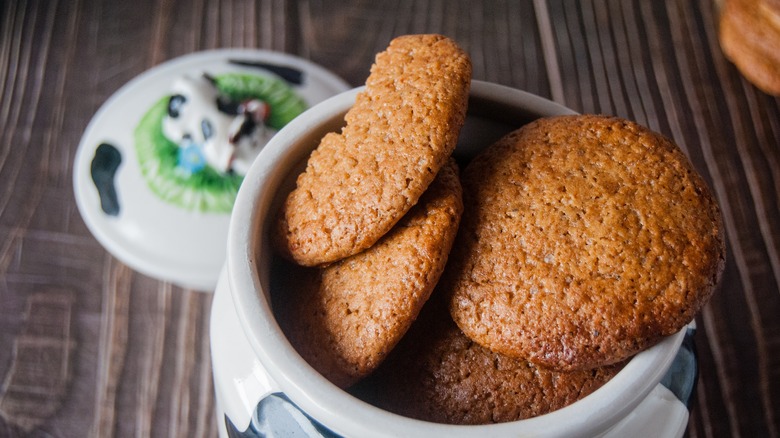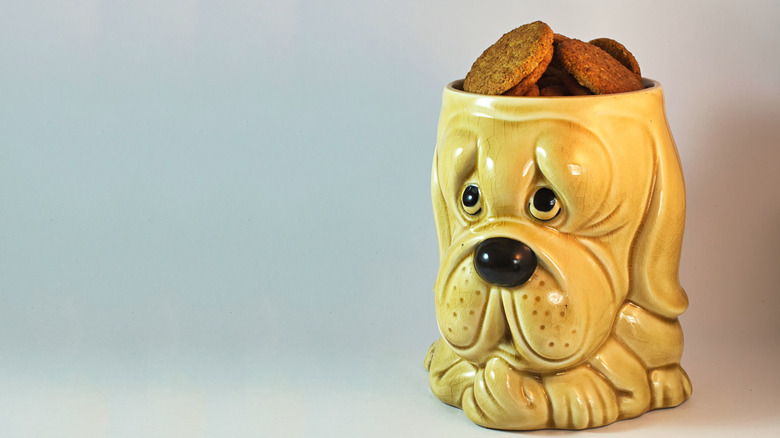How Cookie Jars Became A Classic Element In Home Decor
Kitchens are ideally filled with things that offer both practical storage and joy to behold. Nowhere is this more true than in the classic cookie jar. Usually large and made of glass or ceramic materials, jars often take the shape of all manner of things, from mushrooms and flowers to favorite pop culture references and cartoon characters. While their popularity may have waned in the last 20 years due to more minimalist kitchen designs and the popularity of coordinated canister sets, the cookie jar is still a great nostalgic nod to the past and a way to express personality, interests, and a sense of whimsical fun.
The rise of cookie jar popularity hit its peak from the 1950s through the 1990s, when they could usually be found in most kitchens harboring everything from actual cookies to other snacks or non-food bits and bobs. This rise had much to do with changes in how Americans were living, shopping and eating in the mid-late 20th century that required a place to keep the baked goods fresh. It also had a lot to do with vintage style and kitchen decor, which tended toward bolder colors and fun accents during these decades.
The rise of cookie jars
The first containers specifically dedicated to cookie storage arose in Britain during the 1700s, where they were called 'biscuit jars" or "biscuit tins." They were usually glass with a metal lid and used to store baked goods so they wouldn't go stale too quickly. They didn't hit the U.S. until the late 1920s and 1930s when the Great Depression forced many families into baking at home rather than visiting expensive bakeries each day for bread and treats. The first dedicated ceramic cookie jar was created by the Ohio glass company, Brush Pottery, which created a simple green canister emblazoned with the word "COOKIES" on the exterior.
By the 1950s, most American kitchens harbored at least one container specifically dedicated to cookies. Cookie jars gained even more popularity by a rise in the manufacture of pre-made cookie dough and box mixes, which allowed more households to bake sweets faster and more frequently. The jars also provided a great spot to stash store-bought cookies, which could be kept fresh much longer in the jars than in their original packaging.
Cookie jars today
While not as popular in kitchens today, where cookies are often stored in apothecary jars or air-tight storage containers (or more informally in upcycled glass jars or zip-locked bags), ceramic cookie jars are still a much-collected item and widely available in places like thrift stores, antique vendors, and flea markets. They can be found inexpensively in many cases, though rare and vintage collectible jars can cost hundreds of dollars. You can also find highly luxe and designer new cookie jars at high-end retailers like Williams Sonoma and Anthropologie, including cookie jars fashioned by in-demand ceramic artists.
Recently, cookie jars have become more of a nod to the charming past than a kitchen essential. Their use in kitchens is on the rise, with more vintage-laden aesthetics like cottage style and Grandmillenial design,which revel in antiques, nostalgia, and the expression of personality through decor accents. These styles are riding an overall trend toward maximalism in homes, where bringing back the cookie jar can be a fun and functional element to add personal style to your kitchen.


